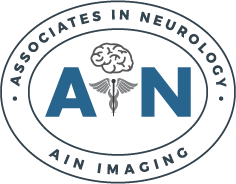
Cerebral palsy refers to a group of conditions commonly occurring in children and affecting their movement, posture, and muscle coordination. In the United States alone, of every 1000 kids born every year, between one and four have cerebral palsy.
Here are some tips for choosing the right cerebral palsy treatment plan for your kid and where you can go for cerebral palsy treatment in Southeast Michigan.
Tip #1 Consult aNeurologist
To choose the right cerebral palsy treatment plan for your kid, consult a neurologist. Your neurologist is a healthcare professional skilled in diagnosing, treating, and managing brain and nervous system disorders.
A neurologist can diagnose your child’s cerebral palsy by checking their muscle tone, motor skills, coordination, and movement. They may also ask you several questions about your baby’s birth history and development, the milestones your baby has reached, and any delays in reaching the developmental milestones. You may also be asked about your child’s cerebral palsy symptoms and their severity. Typically, the symptoms of cerebral palsy vary depending upon the type of CP (cerebral palsy).
A neurologist may also order diagnostic imaging tests to see a clear picture of your child’s brain. Computed tomography and magnetic resonance imaging are the two most common types of scans that a neurologist orders to determine the location and severity of brain damage. The images from the scan allow a neurologist to diagnose accurately and recommend the most effective therapies. In some cases, a neurologist does not order imaging scans and recommends waiting until your child is older enough to avoid anesthesia for an imaging study.
What’s more? A neurologist can also assess other conditions of your child that occur along with cerebral palsy. Typically, children and adults with CP may also have chronic pain, epilepsy and seizures, vision or hearing problems, gastrointestinal problems, intellectual disabilities, bladder and bowel control problems, and spinal abnormalities.
Based on the result of the initial assessments and diagnostic tests, a neurologist can develop a personalized treatment plan. They will discuss the plan with you and recommend the most appropriate and effective treatment options.
Tip #2 Learn About the Cerebral Palsy
Cerebral palsy is a motor disability caused by an injury to the immature brain during childbirth or within the first two years of the life of a baby. The injury or trauma to the brain affects the ability of the brain to properly send messages to the muscles about how to move in well-coordinated ways. Children with cerebral palsy experience abnormalities or problems in muscle tone, movement, and coordination.
Tip #3 Understand the Types of Cerebral Palsy
Before choosing the right treatment for cerebral palsy, it is important to understand the different types of cerebral palsy. Typically, cerebral palsy is classified in two ways based on what part of the body is affected and what movement disorders are more prominent.
Based on the movement disorders, cerebral palsy are as follows:
Spastic Cerebral Palsy
This is the most common type of cerebral palsy, affecting approximately 57% of people. Anyone with spastic CP experiences tight and stiff muscles that contract uncontrollably, making their movements like walking and talking appear jerky.
Dyskinetic Cerebral Palsy
Also known as athetoid cerebral palsy, this type of cerebral palsy leads to irregular movements in the limbs, tongue, and face.The motions of the individual may be smooth and slow or quick and jerky, and may look like they are writhing or twisting. Such movements are more common when the person is active.
People with dyskinetic cerebral palsy may drool because of their inability to swallow their saliva.
Ataxic Cerebral Palsy
Ataxic cerebral palsy causes problems with balance, coordination, and depth perception, making it hard for people to stand or walk without swaying or falling. Children with this type of CP often spread their feet apart to walk.
Mixed Types
In this type of CP, damage occurs to more than one brain area causing several symptoms at once. This type of CP manifests symptoms of all other three types of cerebral palsy.
Tip #4 Explore Different Treatment Options
Unfortunately, there is no cure for cerebral palsy; however, its symptoms can be managed with a combination of treatments. The treatments are focused on improving the daily functioning of an individual with cerebral palsy. The type of treatment a person may need will depend upon their specific symptoms and needs (that may change over time).
Typically, CP treatments may include medications, physical therapy, occupational therapy, speech and language therapy, and surgical procedures. It is recommended to understand the benefits and risks of each treatment option before considering them.
A brief description of the most commonly employed CP treatment options is as follows:
Medications
Medications work by reducing muscle tightness, which ultimately improves functional abilities. They also treat pain and manage complications related to cerebral palsy symptoms.
These medications can be administered as an injection to treat the tightening of specific muscles. Examples include Botox injections.
Neurologists may also recommend oral medications like baclofen, tizanidine, and diazepam to relax muscles. In some cases, they may also surgically implant a medication pump under the skin of the abdomen to deliver medications. Individuals who drool may also get a buttock injection into their salivary glands.
Physical Therapy
Physical therapy improves individuals’ strength, balance, flexibility, motor development, and mobility.A physical therapist may also teach parents or caregivers some ways to safely care for their child’s everyday needs at home and provide guidance on how to continue muscle training and exercises at home during in-office physical therapy sessions.
Occupational Therapy
An occupational therapist works with the child to help them gain dependence in their daily activities at home, school, and in the community.They also recommend adaptive equipment, such as walkers, wide-based canes, electric wheelchairs, and standing and seating systems.
Speech And Language Therapy
To improve a child’s ability to speak clearly or to communicate using sign language, speech and language therapy is recommended. You may also expect your child to learn the use of communication devices such as voice synthesizers and computers.
Surgery
In certain cases, surgery is recommended to correct bone abnormalities and lessen muscle tightness caused by spasticity. A child may undergo orthopedic surgery to correct the position of the arm, spine, hips, or legs, eventually reducing pain and improving mobility. In severe cases where other treatments fail to provide relief, neurologists might cut the nerves that serve specific spastic muscles to relax the muscles and reduce pain.
Cerebral Palsy Treatment in Southeast Michigan
Cerebral palsy treatments work best when started early. If you think your child is showing symptoms of cerebral palsy and you are in search of a highly trained and skilled neurologist who can assess your child’s symptoms and make a diagnosis, visit us at Associates in Neurology. We have a team of highly trained and experienced neurologists who have all the skills and advanced technology needed to diagnose cerebral palsy and provide treatments to improve your child’s strength, balance, flexibility, mobility, and motor movement. If needed, our board-certified neurologist can also perform surgical procedures to address the disabling symptoms of cerebral palsy.
If you would like to learn more about cerebral palsy or other neurological conditions our neurologists treat regularly, call us today at (248) 478-5512. If you wish, you can schedule your consultation with our neurologists by using our convenient online appointment request form.


